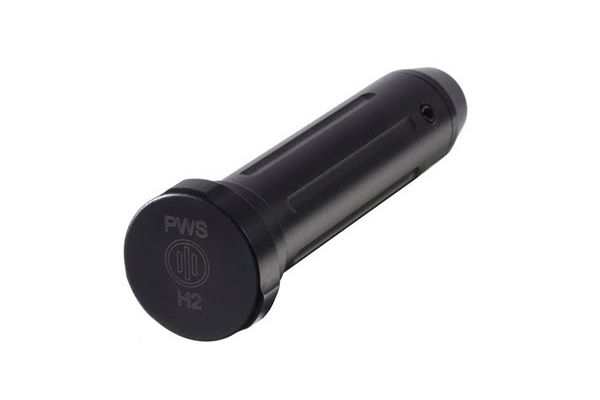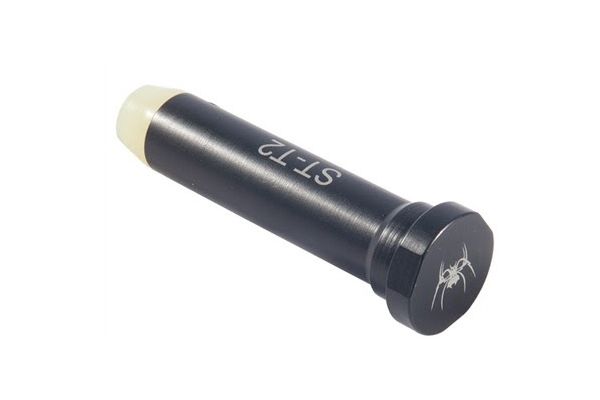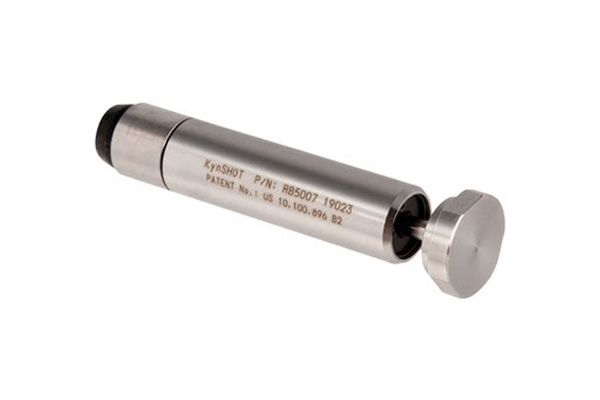At a Glance: Best AR-15 Buffers
- OUR TOP PICK: Clenzoil Field & Range Gun Cleaning Spray & Lubricating Oil
- RUNNER UP: Umbrella Corporation Unicorn Lube Gun Oil
- BEST BUDGET OPTION: Slip2000 Gun Lube 4oz Bottle
Comparison Of The 3 Best AR-15 Buffers
| PRODUCT | DETAILS | ||
|---|---|---|---|
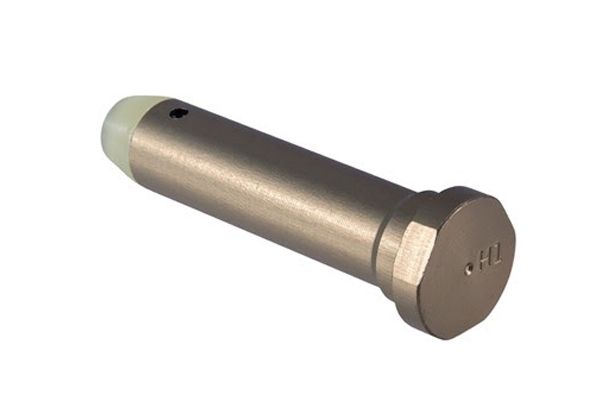
Our Top Pick
|
Brownells – AR-15 Heavy Carbine Buffers |
|
View Latest Price |
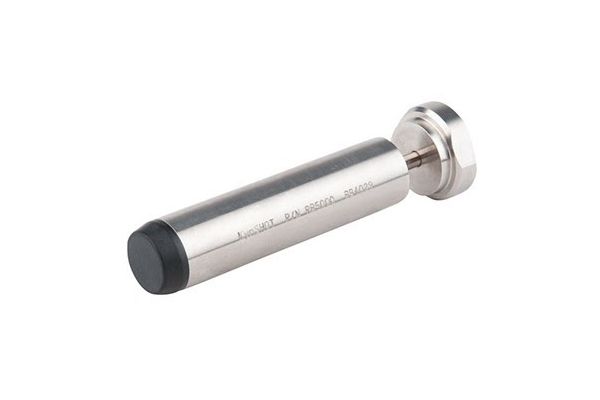
Our Top Pick
|
Kyntec Corporation – AR15/M16/308 Ar Recoil Buffer |
|
View Latest Price |
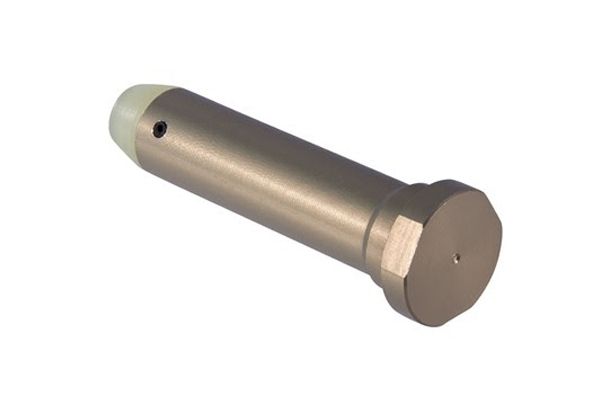
Our Top Pick
|
Brownells – AR-15 Carbine Buffer |
|
View Latest Price |
Here Are The 8 Best AR-15 Buffers Reviewed
‘A mere cog in the machine’ is definitely not the right way to think about your AR buffer. Novice shooters, and even more experienced ones will often neglect the importance of having a proper buffer in their rifles. They will either go with the stock option that came with the rifle or in worst-case scenarios, use the wrong one and wonder why their AR isn’t working properly. No matter how insignificant it may seem to some, the Best AR-15 Buffers with the correct weight and the best buffer springs for your system will provide a much more effective shooting experience than you might think.
Brownells – AR-15 Heavy Carbine Buffers
Brownells buffers offer a good value for the price you’re paying. They are heavy buffers that come in an aluminum casing, regular plastic cap, and in 3 different sizes. The H1 buffer weighs 3.8 ounces, the H2 is 4.8 ounces, and the H3 is 5.4 ounces. The heavier the buffer, the higher the price, but you still get a good bargain on what are very good quality buffers.
The first thing most of you will notice is that they are a bit heavier than your regular AR buffers, and the reason being is that they are meant to be used in rifles with a shorter barrel, to smooth out the recoil a bit better. Considering how short the barrel and the gas tube are in carbine versions, these buffers will be a good choice, because their weight is exactly what you need in order to control your AR during shooting. They are also a good option for those who want to shoot a more powerful round than your standard 5.56 or .223. And, as an interesting side note, US M4 carbines use an H2 buffer.
This is a great option for those who are on a tight budget and one of the Best AR-15 Buffers on our list. Maybe you won’t be impressed with the finish, or a rare tool marking or scratch that somehow passed through quality control, but overall Brownells delivers a solid product that’s not going to break the bank.
Pros
- Standard Brownells quality
- Comes in 3 different weights
- Perfect for carbines
- Noticeably less felt recoil
- Affordable
Cons
- Heavier than regular buffers
- Finish isn’t perfect
Kyntec Corporation – AR15/M16/308 Ar Recoil Buffer
Kyntec is a company that was founded fairly recently, in 2012, with the main goal of producing shock absorbers and rate control devices. They have had success when it comes to designing new and innovative products, and their quality is truly superb. According to them, the Kyntec AR15/M16/308 Recoil Buffer has a ten-year and one million round guarantee, and considering most modern barrels don’t even last that long, that in my honest opinion speaks volumes.
The Kyntec AR15/M16/308 Recoil Buffer is a hydraulic buffer in a stainless steel case with a high-impact striker cap, fully sealed and filled with high-grade hydraulic oil. What do all those specifications mean? This buffer is built to last, regardless of the weather conditions, if it’s hot or cold outside, rate of fire, type of ammo, it will always provide the same high performance.
As the name suggests, the main area where this buffer truly shines is in recoil dampening. If you are a member of the military, law enforcement, or a competitive shooter, this device is made for you. It significantly reduces the felt recoil, especially if you are firing .308 rounds. It will help you to keep your rifle flat when you need to fire two or three consecutive shots fast. I couldn’t find any significant drawbacks to this buffer, but maybe somebody will be turned off by the price, which is significantly high compared to a regular buffer. However, if the manufacturer is right about its longevity, then perhaps think of it as a good long term investment.
Pros
- Excellent build quality
- Hydraulic system
- Significant recoil damping
- Ideal for competitive shooters
- Cost-effective
Cons
- Higher priced than the competition
Brownells – AR-15 Carbine Buffer
Another buffer from Brownells, but this one comes in a standard weight. In an aluminum body, with a good finish, you will get 3 regular steel weights separated by rubber washers. The fit and finish are actually decent considering the price, there are no burrs or scratch marks and it will fit perfectly inside any AR carbine buffer tube.
This mil-spec buffer will be more than effective for most shooters, especially to novices who are shopping for their first AR carbine. This is the type of buffer that comes pre-installed in most factory-made ARs. And for a carbine buffer, it does the job it’s designed to do and does it really well, again, considering the price you’re paying. It’s nothing groundbreaking, there are no proprietary weights, no high tech finish or materials, so even if you do manage to damage it, which is highly unlikely, it can be easily replaced. It is, as the name implies, designed for carbine length gas systems, but you can also install it in ARs that use a mid-length gas system, where it will perform better because the amount of gas entering the upper receiver is lower and thus the impact of the bolt carrier group on the buffer is reduced.
For shooting ammo like 5.56 or .223, this is a satisfying option, however, coming only in one weight, I would advise you to invest in additional buffers, in case you want to upgrade to different calibers or gas system configurations.
Pros
- Reliable quality from Brownells
- Good fit and finish
- Standard weight
- Bargain price
- Ideal for carbine and mid-length gas systems
Cons
- Can be used only for 5.56 and .223 caliber AR-15s
Primary Weapons – AR-15 Enhanced Buffers Carbine Black
Primary weapons hail from Boise, Idaho and their main line of products are tactical and sporting rifles and accessories, with the majority of them being AR-15 style rifles. Well known for the top-notch quality of their products, they definitely didn’t disappoint when they designed this buffer.
The body of the buffer is made from 4140 steel, and it is treated with FNC Life HD, in order to maximize the bonding of the lubrication to the buffer, to allow for smoother operation. The buffers come in 3 different sizes, H2 being 4.4 ounces, H3 5.1 ounces, and H4 weighing in at 6.8 ounces. Heavier weights do mean these buffers can and most likely will be used with more powerful ammo than your standard .223 Remington, and also with shorter barrels and gas systems. Will it be a good choice to install inside an AR15 pistol? Even the lightest buffer, the H2, has proven it can certainly slow down the rate of fire and reduce the felt recoil, and if you plan on spending a good part of your weekend at the shooting range, your shoulder will probably be grateful to you if you choose to install this buffer.
Heavy weights, in combination with a superior quality, will work amazingly with a short gas system. The buffers can be used in most carbine configurations, but as I mentioned previously, people who are fond of AR pistols or shooting suppressed would benefit the most. In case you do belong to such a group, be sure to check out this buffer from Primary Weapons.
Pros
- Reduced gas blowback
- Finish resistant to wear and tear
- Ideal for short gas systems
- Ideal if you want to shoot with a suppressor
- Reasonably priced
Cons
- Not suitable for carbines that require lighter buffers
Spikes Tactical – AR-15/M16 Carbine Recoil Buffers
Spikes Tactical is another well-established company which is in the business of making AR-15 rifles, accessories, and parts. Coming from Florida, they proudly claim that all material used in making their rifles is made in America, then machined and assembled in their main factory in Apopka. One interesting fact, the company was founded exactly one day before 9/11, and most of the founders and people involved in Spikes Tactical are vets or active in the shooting community.
Just like most buffers on the market today, this one is made from aluminum, but with a hard anodized finish, to prolong the lifespan of the buffer. The cap is made from polyurethane to act as a sort of cushion when and if it hits the end of the buffer tube. The choice of weights is H1 at 3 ounces, best paired with AR’s with a mid-length gas system, H2 at 4.1 ounces, for use in carbines and perhaps some AR-pistols, and H3, the heaviest, at 5.4 ounces.
Spikes Tactical AR-15/M-16 Carbine Recoil Buffers look and feel like quality products, but what makes them stand out from the rest? Well, traditional buffers have been filled with small cylindrical weights, separated by rubber washers, with some free space inside. Spikes Tactical fills their buffers with tungsten powder, so each time they get hit with the bolt carrier group, you won’t feel or hear weights hitting the head of the buffer. A simple, but highly effective solution.
Pros
- Hard-anodized finish
- Mid-range price
- Available in different weights
- Reduces noise made during interaction with the bolt carrier group
- Significantly dampens the recoil
Cons
- None in my opinion
Colt – Carbine H2 Heavy Buffer
Has anyone ever heard of a company called Colt? From the same people who brought you such legends as M1911 A1, the Peacemaker, Python, Detective, Cobra, and of course the AR-15, here comes another interesting product, albeit not as legendary.
The Colt Carbine H2 heavy buffer weighs 4.6 ounces, and it comes, as you would expect, in an aluminum body, made to mil-spec dimensions, and with a solid finish. It will fit most AR-15 and M-16 buffer tubes, but bear in mind, considering this is an H2 buffer, it will work well in most carbines. However, if you have an AR-15 pistol that you want to slow down a bit, so to speak, consider installing this buffer and see how it behaves.
All that being said, since it is a standard H2 buffer, with no gimmicks or tricks up its sleeve, just your regular 2 tungsten and 1 steel weights packed in an aluminum cylinder, does it justify the price which is uncommonly high for such a simple buffer? I can’t answer that, all I know is that Colt has always been a reputable company known for durability, longevity, and excellence when it comes to the performance of their weapons. And when a member of the military or law enforcement also makes that claim, then hey, that’s all I need.
Pros
- Colt standard
- Satisfying fit and finish
- Perfect for AR carbines
- Even better for AR pistols
- Fits any AR-15 and M-16 buffer tube
Cons
- Expensive compared to other offerings on the market
Kyntec Corporation – AR-15 9mm Hydraulic Recoil Buffer
Kyntec has offered yet another hydraulic recoil buffer, but this time for using an AR-15 to fire 9mm rounds, probably the most prolific handgun round today. As with the previous model reviewed here, this one uses a hydraulically dampened piston to soften the impact of the bolt carrier group, the final result being a much more stable firing action.
The hydraulic buffer is made to work in all conditions, whether it’s hot or cold outside. No matter how fast you are shooting, it won’t suffer from the problems that characterized the older hydraulic buffers, especially oil leakage. It stops the bolt just behind the bolt catch, provides a soft recoil impulse, and allows the user to have much faster follow up shots, which did surprise me considering how much heavier the bolt on a 9mm AR is compared to the one on your rifle or carbine. Irrelevant of the barrel length, going from 5 inches all the way up to carbine length of 16 inches, it will still offer relatively similar performance, however, I would recommend you not to go overboard, if your barrel is 8 inches long or lower it will provide the best results.
Frankly, this is a really good option, no matter what configuration your 9mm AR comes in, even if you shoot with a suppressor, this buffer, just like it’s big brother, performs just as well.
Pros
- Stainless steel body
- Superb recoil reduction
- Operates equally well in all weather conditions
- Nearly nonexistent spring noise
- Improves accuracy and control of the weapon
Cons
- Not for everyone’s budget
Odin Works – Adjustable Buffer
Here’s something most of us will appreciate, a buffer that comes with an additional set of different steel and tungsten weights that you can change and combine to your liking. One buffer to rule them all. Granted, the options are not unlimited, but if you happen to have an AR-15, or a .308 AR, or a 9mm AR pistol, or maybe all of them and don’t want to spend money buying separate buffers for each one of them, check out Odin Works Adjustable Buffer.
The principle is simple, the buffer tube is made of stainless steel, in a simple package, that does have on its back a handy chart explaining how to load the buffer and which weights to use for your specific AR and its purpose. It doesn’t matter if you are into competitive, 3-gun, precision shooting, or own a 9mm AR, they have got you covered.
Inserting and/or replacing weights is fairly simple. Instead of pushing the pin at the bottom and removing the cap, the reloading process is done from the top of the buffer, on the side of the head there is a small set screw which needs to loosen up before the big set screw on the top can be unscrewed. Once that’s done, depending on what AR you have, insert the desired combination of 2 stainless steel and 3 tungsten weights and set up your new buffer.
Pros
- Versatility
- Good functionality
- Durable and wear-resistant
- Fits a lot of different AR configurations, if you buy additional weights
- Excellent price to quality ratio
Cons
- The screws tend to get loose from time to time
What is An AR-15 Buffer?
So, what exactly is a buffer? Well, inside the buffer tube of every AR-15 style rifle are two important elements that help with the proper cycling of your bolt carrier group. The buffer and the recoil spring. The buffer’s main job, besides mitigating the recoil of the gun, is to act as, just as the name tells us, a buffer between the bolt carrier group and the recoil spring.
It is a simple hollow cylindrical tube, filled with steel, aluminum, or tungsten weights separated by washers. On one end, when it comes into contact with the bolt, it is sealed shut, while on the other end it has a removable plastic or polyurethane cap.
There are several types of buffers, but the two main ones are rifle and carbine buffers. The types differ in length and weight and in the majority of the cases are not interchangeable, but nevertheless, their main job still remains the same.
How AR-15 Buffer Works
An AR-15, like most popular semi-automatic rifles today, is a gas-operated rifle, and without getting too technical, let’s just say it uses expanding gases from the fired cartridge to push the bolt carrier group back in order to eject the spent round.
That’s where the buffer system springs into action, literally. The buffer system as mentioned above consists of a buffer inserted into a recoil spring, and it is encased inside a buffer tube. When the bolt starts acting against the buffer, pushing it backward, the recoil spring reacts by pushing the buffer and the bolt forward, cycling the action of the gun.
That Means that the bolt carrier group is forced forward into the upper receiver, picking up a new round from the magazine and loading it into the chamber.
It is a fairly simple action, but a delicate balance is necessary in order for it to work properly. Using a buffer that is too light will cause the felt recoil to be too strong to effectively control the rifle over a prolonged period of shooting. The wear and tear of your inner components will also be significantly increased. If you use a buffer that is too heavy, the bolt will not cycle properly, it will fail to feed a new round or fail to extract the old one.
Balancing your buffer system with your gas system
Balancing your buffer system with your gas system is crucial for the smooth functioning of your rifle. Some like to compare it to carefully tuning your AR like you would tune a guitar, some like to compare it to tuning a piano, an extremely deadly piano. But considering I can’t play either instrument, I like to think of it as a seesaw.
The same way you wouldn’t let a full-grown male polar bear play on a seesaw with a 4-year-old kid, over gassing your AR in combination with a light buffer will cause the bolt carrier group to violently slam back and forth inside your buffer tube. Doing the opposite, using a buffer that is too heavy, with a harder recoil spring, and under gassing the rifle, will probably prevent the bolt from cycling properly. Therefore a perfect balance is necessary.
You can easily check if your AR is properly set, by looking at the angle of ejection of spent casings after firing. If the spent casing is ejected in a direction closer to the barrel or towards your shoulder and arm, that means you need to make some adjustments. The sweet spot is when shells are ejected at an angle right around 90-degrees.
How To Choose The Most Reliable AR-15 Buffer
So, there are two main types of buffers, right? Carbine and rifle buffer. Most likely, if you are using a standard AR that you either built or bought, you will be using a carbine length buffer.
But how to know if this is the best choice for you?
It all depends, as I said, it needs to be in the perfect working symbiosis with the gas system and the bolt. Depending on your gas port size, gas tube length (which also varies in length between rifle, mid-length, or carbine), and the weight of your bolt, the ideal weight of your buffer will vary. A rule often repeated is to use the heaviest buffer possible while still making sure your rifle will cycle properly. This means that you will have to experiment with various models before choosing the one that suits you best. If you’re not sure or don’t want to bother with that, a standard weight buffer will get the job done. As buffers come in various weights, and let’s explore what those weights are.
What AR-15 buffer weight options are there?
Carbine buffer weight is the standard for most AR carbines. It weighs 3 ounces and consists of a hollow aluminum tube, filled with three steel weights, separated by rubber washers which prevent the weights from slamming against each other. It is a great option because it can be used with a really wide variety of ammo, and is not just for carbine length rifles, but also works well with mid-length gas systems.
The next one is the Heavy or “H” buffer, weighing in at 3.8 ounces. The added weight is accomplished by replacing only one of the steel weights with a tungsten weight. Considering most AR’s are over-gassed on purpose, even if you do choose to go with this option, you won’t experience any issues with the cycling of the weapon.
By replacing two steel weights with tungsten ones, you will get an “H2” buffer, weighing in at 4.6 ounces. If you think this will probably be too heavy for your carbine, you are right. Even though they can be used with carbine-length systems, most people choose to use them in AR pistols.
A buffer with all tungsten weights is, no surprises here, called an “H3” buffer, weighing in at 5.4 ounces. Where and why would you use this one? If you’re planning on shooting a larger caliber from your rifle, and there are a myriad of options available today, even the .458 SOCOM, you will need a heavier buffer to absorb the recoil from a more powerful round.
And the heavyweight title definitely goes to buffers designed to work in AR pistol platforms. The main reason being the difference in how the gun operates, a design called direct blowback, which puts significantly more pressure on the bolt carrier group causing it to slam harder into the buffer. The buffers usually weigh around 5 ounces, but there are heavier ones, like “HSS” which is 6.5 ounces and “XH”, at about 8.5 ounces.
AR-15 buffer length options
When Eugene Stoner designed the AR-15, the buffer he used was the rifle variant, 6 inches long. The original buffer tube it was housed in is significantly longer than the modern carbine version, at 9.625 inches versus 7.625 inches, because it was meant to be used within a fixed A2 buttstock. The longer buffer was deemed necessary in order to fill the extra space in the buffer tube. As most modern AR’s now use a collapsible or telescopic stock, a short carbine buffer, commonly 3-¼ inches long, is used in those tubes. Using a longer rifle buffer inside a carbine tube will potentially cause it to slam inside the tube, potentially damaging the weapon. The length of your buffer will depend on your choice of stock.
Best AR-15 buffers material options
By now we have established that a buffer is a simple hollow aluminum or stainless steel tube filled with weights, separated by rubber washers. The weights, as the main component of the buffer, are in control of how hard or soft the buffer system reacts with the bolt carrier group. Lighter buffers generally use weights made of steel or aluminum, and if you decide you want to increase its weight, it can be easily done by replacing one or more of the steel ones with weights made of tungsten, which are more dense and hence heavier. Or if you are somewhere outdoors and performing such a procedure isn’t easy, you can just buy heavier weights and carry them with you.
But buffers have also been improving constantly and there are buffers on the market now that use a simplified hydraulic system instead of weights. The added benefit of this type of buffer is the fact that it significantly dampens the recoil and stabilizes the rifle, so most competitive shooters will probably be interested in purchasing and using one.
Mil-spec vs. commercial buffer tubes
Again, let’s get back to Mr. Stoner and his original design. Back in those days, the material used to make buffer tubes was different than the one we use today. The process was also different, much costlier than today. A mil-spec buffer tube is usually made from 7075 T6 aluminum, the threads on the tube are rolled into metal, and its diameter is 1.146 inches. Something had to be done to lower the cost of the production, so manufacturers used a new method and improved materials. New commercial buffer tubes are extruded from 6061 T6 aluminum, with the threads now being cut into the metal, and the diameter of the tube has become 1.170 inches.
The main advantage commercial buffer tubes have over mil-spec ones is the lower cost of production, however, they are still not as widely available as the mil-spec ones. In both cases, the materials used are sturdy and rigid enough. No matter which one you choose, most stocks that go on them come in both variants. Due to differences in sizes, stocks for commercial buffer tubes can be mounted on mil-spec ones, but they will rattle a bit. As you would probably assume, mil-spec ones will be too small to be mounted on commercial buffer tubes.
How do you know when to replace your AR-15 buffer spring
All parts of an AR-15 have an expiration date, including recoil springs. Solid advice would be to change the recoil spring before you start experiencing issues with cycling or jamming. Considering that most springs are made of stainless steel and are fairly cheap, investing in a couple of spare ones is a good long term plan. There are several springs today made out of chrome silicone, a much more durable but equally elastic material, however, the price can be a bit higher than the stainless steel versions.
But the main question most people ask is how often should you change your buffer spring. There are people who like to use measurable data, like a number of rounds fired, whether it’s 2000 or 5000 rounds fired, or an interval of time, e.g. changing the old spring on a yearly basis. The easiest way to determine if the spring is in dire need of change is actually a numeric value, that is, the minimum and maximum length of the spring. A rifle spring should have a length anywhere between 11-¾ and 13-¾ inches, while carbine spring must be between 10-⅛ and 11-¼ inches. If it has deformed to any other length, the spring needs to be replaced.
How to test the proper function of your AR-15 buffer spring
As mentioned in the section above, make sure the spring is still the proper length. Now that you have all this information before you, it’s fairly easy to determine if your spring will properly function. With the right ar15 buffer weight, and the correct length of the recoil spring, your AR-15 should properly cycle no matter the quality of ammo you put through it.
How to install an AR-15 buffer
Installing a new buffer is an easy procedure, and it shouldn’t take more than ten minutes of your time, granted you do need a reasonably flat surface to do that and a new buffer and a spring.
The first thing that needs to be done is to separate the upper from the lower receiver, because the new buffer will be inserted into a buffer tube connected to the lower receiver. You will notice a small pin holding the old buffer in place, push the old buffer slightly inside the tube, and with one finger press down on that pin. While still holding the pin down, release the old buffer, and it should slide easily out because that small pin was all that was holding the buffer and the spring inside the tube.
Take your new buffer, with the steel end facing the bolt carrier group, and place it inside the spring. Should you choose to, you can also do some cleaning and lubing of the inside of the tube before you install it. Push the new buffer and the spring down into the tube, all the way down until it passes the holding pin, and as soon as the pin pops up, release the buffer and it will fall into place. Now, all you have to do is to reassemble the rifle and take it out for testing to see how it all works together.
So, What is The Best AR-15 Buffer?
I don’t have one clear winner but two of them. The Odin Works Adjustable Buffer and The Spikes Tactical AR-15/M-16 Carbine Recoil Buffers offer great value for the price, and you won’t make a mistake if you choose either one of them.
The Adjustable Buffer from Odin Works offers versatility in a small package, and a relatively affordable price while still maintaining the high standard of quality. The fact that you can use one buffer for several different AR versions, or can experiment with your gas system or ammo loads and make appropriate adjustments to your buffer weight, makes this device a great option.
Spikes Tactical Carbine Recoil buffer also scored high on my list, not just because of the unique use of tungsten powder instead of traditional weights, but also because the low price definitely doesn’t match up with the outstanding quality of the product. For those who want to reduce recoil, lower the spring noise and smooth out the action of their favorite AR carbine, I warm/y recommend going for this buffer.


